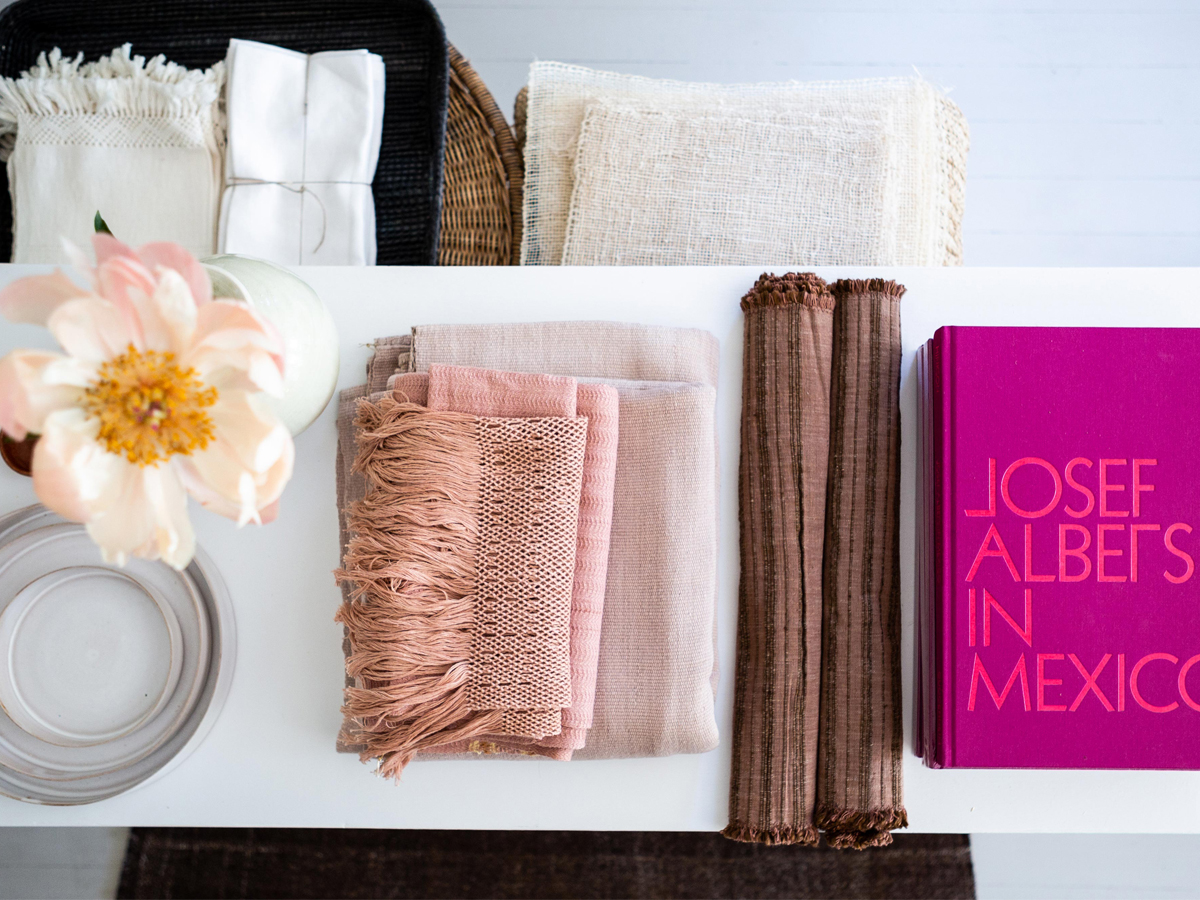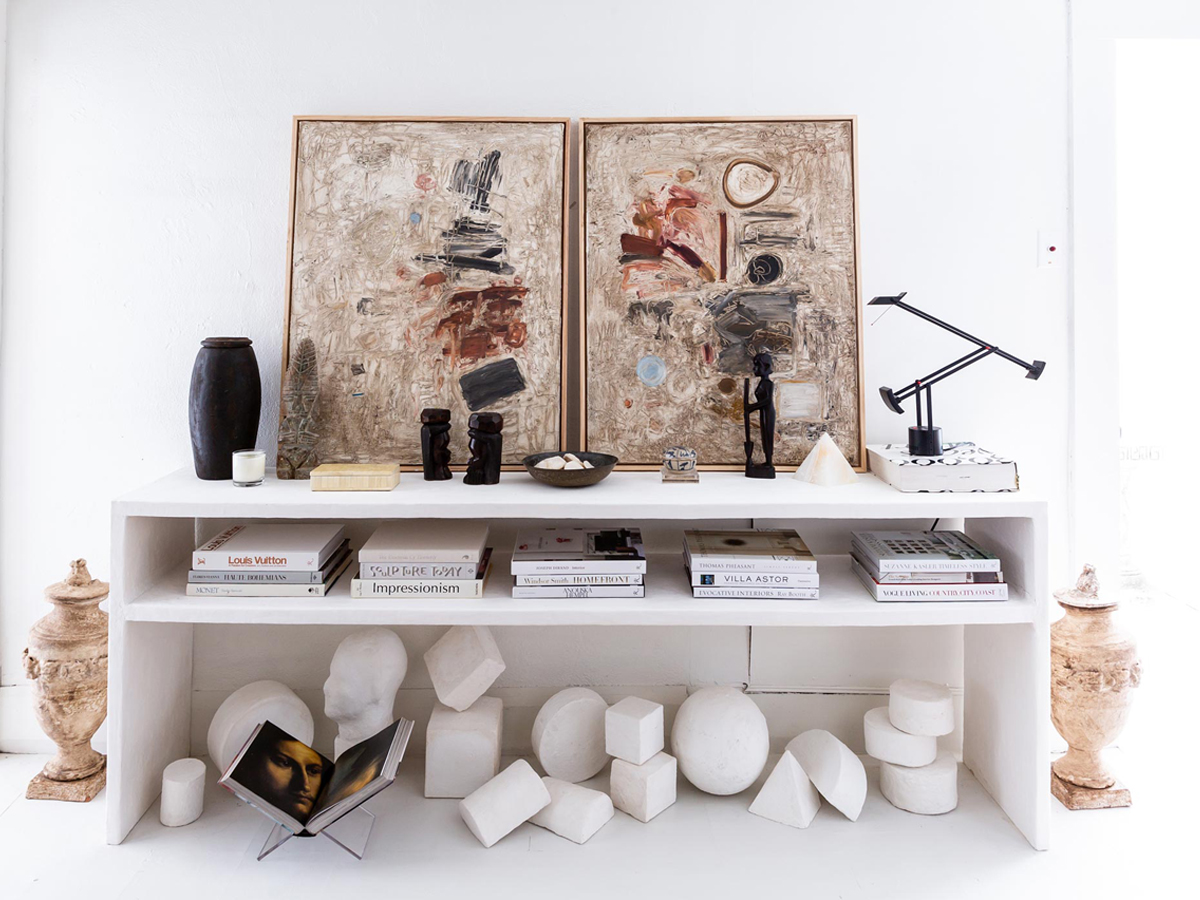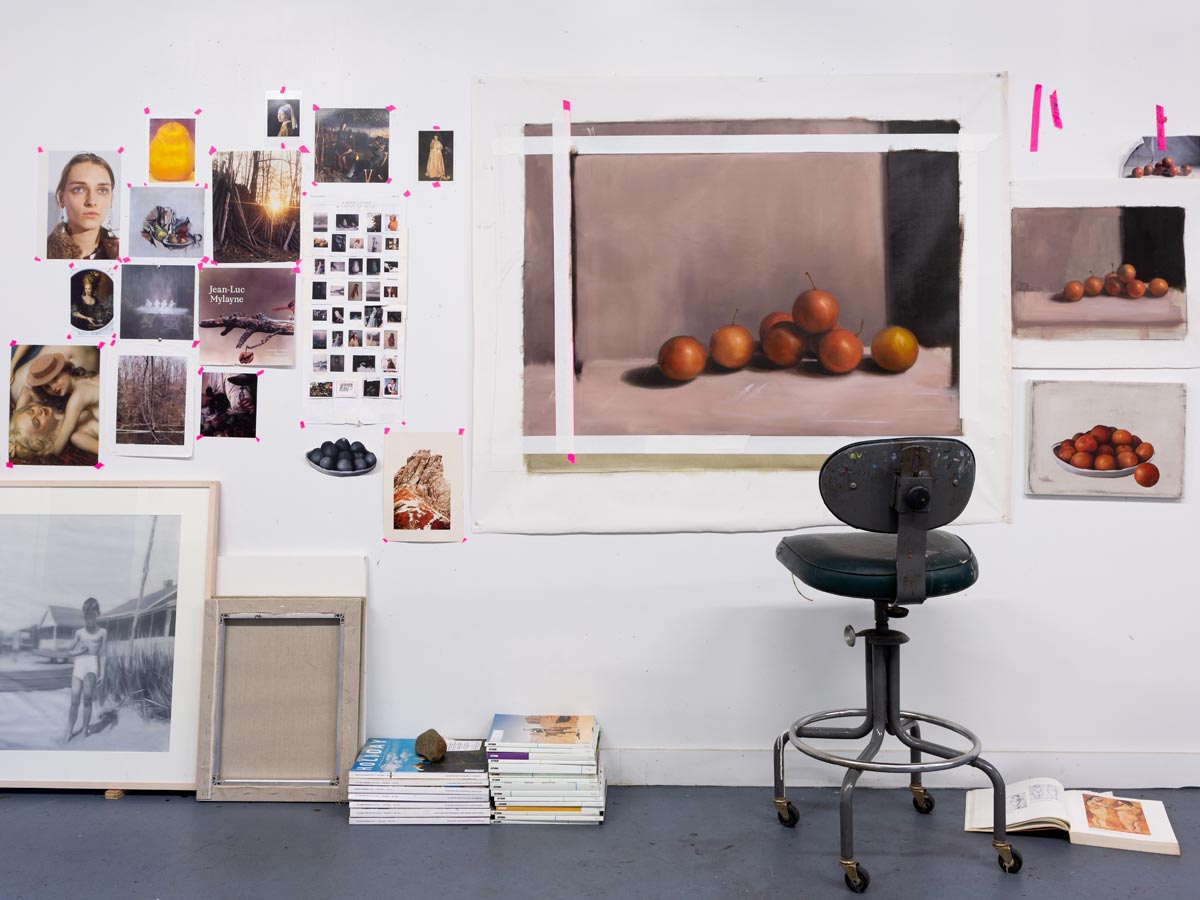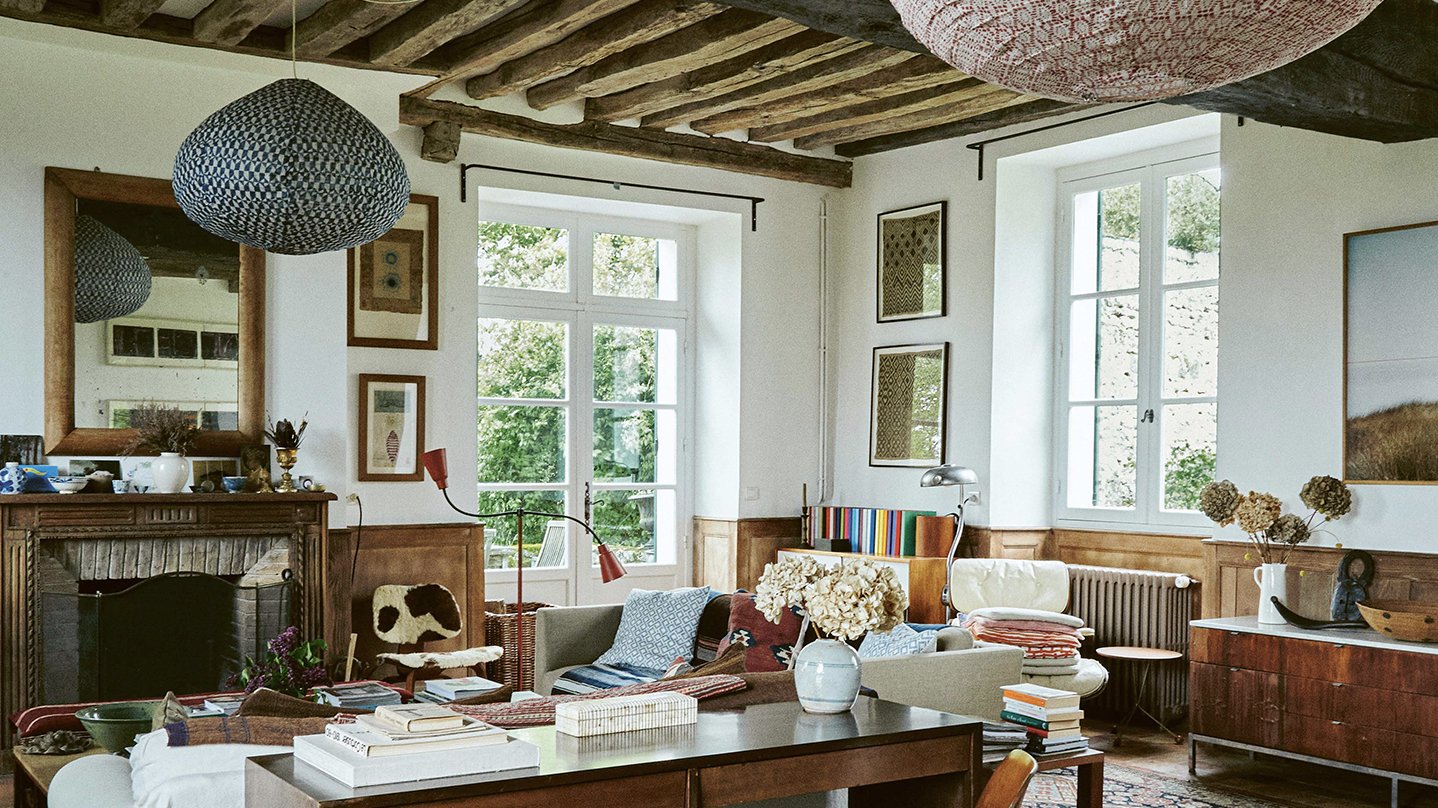AP Shop and the Pursuit of Beautiful Things

Written by S. Pajot | Photographed by Marta Xochilt Perez | Produced and Art Directed by Michelle Adams
The gulls are chattering. A blue heron drifts across the cloudless sky. Monarch butterflies float around wildflower gardens. And if you listen, you can hear the crash of waves from an inland sea against smooth, sandy beaches.
“What is this place? This is Michigan?” a tourist in a linen jumpsuit asks.
No one answers; they all just smile. The locals know the modestly otherworldly wonders of Lakeside, Michigan. So do the visitors and transplants from nearby Chicago, many of whom have made second homes here, spending their summers swimming in Lake Michigan, shopping for antiques, eating fresh fish, sipping Berrien County wine, and watching day after day fade into fiery sunset.
Even with its many admirers, Lakeside (pop. 419) remains something of a secret place, awash with tucked-away spots, such as AP Shop, the clothing and home store run by (and named for) Ariane Prewitt. A native Chicagoan who also grew up in California, Prewitt seems to have been destined for the life of a shopkeeper, even if she might dispute the notion that fate had anything to do with it. “I studied journalism,” she chuckles, dryly. “I don’t know how I ended up here.”
Still, it’s telling that after finishing college in the late 1990s, Prewitt wasted little time before opening her first store, ABN, in Chicago. (That shop was also named for her; Ariane Brett Nelson is her maiden name. She is now married to musician and graphic novelist Archer Prewitt.) “It was focused on midcentury and antiquity,” she says.
“The shop grew again, about two years ago, when a home store that was next door shut down and I took over the space,” Prewitt says. “It was a chance to work a bit more with furniture and decor.” She’s even begun designing and redesigning her own pieces. “Making things is the latest thing that I’m really excited about.”
Every season, the collection changes and adapts to what I think is the perfect wardrobe and the perfect home.
Then came her postgraduate studies: getting hired by Barneys. “Working there was an education in beautiful things,” Prewitt says. “Peter Marino designed the building that we worked in. All of the furniture pieces were by people like Jean-Michel Frank. And then the Pressman family, who were the original owners, they were wonderfully crazy and they had great taste. They would do something like buy a $30,000 armchair and just stick it in the men’s department.”
She spent the next eight years at Barneys, eventually becoming a visual director. But her education wasn’t limited to lessons in aesthetics. “I learned a lot about the business and ethics of selling beautiful things, too,” Prewitt adds. “There’s much, much more to it than just making money.”
Within AP Shop’s airy, gallery-like environs, there are alluring objects, luxuriously woven sweaters, and masterfully hand-hammered jewelry. Yet it is obvious after just a few minutes of conversation that Prewitt also requires her “beautiful things” to be authentic, original, and honorably produced. “That’s a prominent undercurrent to what we do: how something is made, where it’s made, and how ethically it’s made,” she says.
The clothing racks are lined with labels such as Brooklyn’s Blluemade and Apiece Apart, Los Angeles’s Shaina Mote and The Elder Statesman, Paris’s Seya, and Japan’s Eatable of Many Orders. The floors are elegantly strewn with sandals by St. Tropez’s K.Jacques and Brazil’s Mari Giudicelli. And the shelves, set right into the shop’s walls, are stocked with their own precious goods, including gold-filled bone chains by Upstate New York’s Mary MacGill and whimsical, intricate handbags by Mexican weavers. “I am very serious about my role and AP Shop’s role in contributing to ethical, sustainable emerging fashion,” Prewitt insists. “What can I do to help steer these people and pieces that I love and respect toward greater and greater success?”
The other crucial facet of her mission, she explains, is “seeking out the handicraft of the world; those things that seem like they are going to be lost.” It’s about achieving balance between the modern and the ancient, the contemporary and the traditional. “And that’s what I do a lot in Mexico: I look for handicraft that’s still made in the way that it was always made.”
To illustrate, Prewitt points across the shop to a smallish, perfectly unruly bundle perched near the top of the wall like a little mythical creature. “That black bag, it’s made with a pre-Columbian technique. It’s all agave fiber that’s stripped and handwoven. It takes about two months to make,” she says. “It is the best example because it supports women, it’s ethical, and it’s traditional. That’s an ideal backstory for a beautiful thing.”
AP Shop’s handicrafts come from points all across the map—especially Mexico. “One town, everyone is a weaver, the whole family, the husband, the wife, the daughter, the son,” Prewitt says. “Literally, everyone in the whole town. It’s a very competitive thing, too, because everyone wants to be the best.”
Now in their eighth year, Prewitt and AP Shop have begun finding their own traditions. Open only from Memorial Day to Labor Day, the store has become a pilgrimage point for certain Lakeside vacationers. “I have grandmothers, mothers, and daughters who visit me every year,” she says, “and I’ve seen some of them go from college to getting married to having children, and I’ve been able to help them all . . . outfit their lives.”
“For whatever reason, even if I don’t really promote AP Shop, people will come, people will find it, and when they do, it often becomes a destination for them.”
In the off-season, there are other traditions. Prewitt spends mid-September in New York for fashion week. Next, she hunkers down to choose the anchors of the coming summer’s stock list. As winter arrives, Prewitt and her husband set out for Mexico in search of craftspeople and their age-old work. (Though, “Greece is the next place that I’ve been dying to go,” she admits.) And then, inevitably, it’s time to open the store again.
“We are always picking up new vendors, and we have long relationships with others,” Prewitt says. “But the needs of the customer also shape the changes to the collection, so if they are looking for a beautiful sweater, we ask, ‘Who is making a beautiful sweater?’”
This return to Lakeside is never unwelcome. “I love antiques, and I love vintage goods, and I deal with new pieces and traditional crafts, and I make my own furniture, handbags, and other things,” Prewitt says, acknowledging the enigmatic slant of her curatorial and creative impulses. “But the connection is that I’m always looking for tomorrow’s antiques, what will last more than one or two or three generations.”
See a full tour of Ariane’s Michigan getaway
GET MORE AP STYLE







